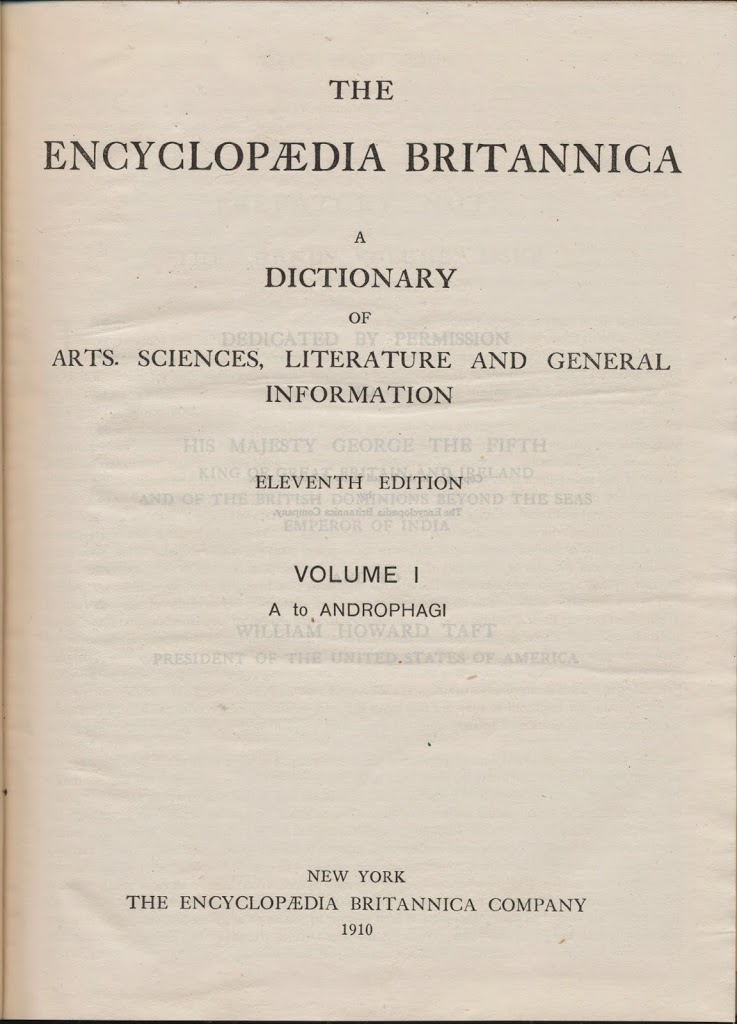If there is ever a date that goes into history books to mark the demise of printed books in the battle with electronic information on the Internet, it may well be March 14, 2012-the day that The Encyclopedia Britannica announced that it was ceasing publication of its 20 volume annual edition. For nearly 300 years this encyclopedia has been the first read for many people who begin to research a subject. The encyclopedia was put to rest by the Internet and Wikipedia, which has incorporated most of the eleventh edition (first published 1911) in its entries. Stamp collectors have always found Britannica useful and I keep an old hundred year old set above my desk from the days when I used it for quick reference for towns, geography and autographs.
Britannica held an exalted position among philatelists in years gone by. My grandfather, Earl Apfelbaum, was in a philatelic Britannica readers group. This group was made of people who claimed to have read the entire encyclopedia cover to cover, all 40 million words, from aardvark to zygote (except that there was no zygote then). They got together to share information on how the knowledge that the encyclopedia imparted had changed their collecting experience (and to feel good about themselves). Britannica in its day was a phenomenon- its 500,000 entries were the only place where you could get a quick answer to a question. We are spoiled by the Internet- if you wanted to know the population of Pittsburgh in 1920 it used to take a trip to the library and quite a bit of research rather than the three seconds it just took me to google the answer (588,343). Philatelic and postal history research was far more difficult then than it is today. We won’t miss the hard copy of Encyclopedia Britannica. It is passing away because something better, easier and cheaper has come along. But those of us who remember with wonder what an incredible accomplishment the Encyclopedia Britannica was then, can only be even more in awe of what the Internet is today.


